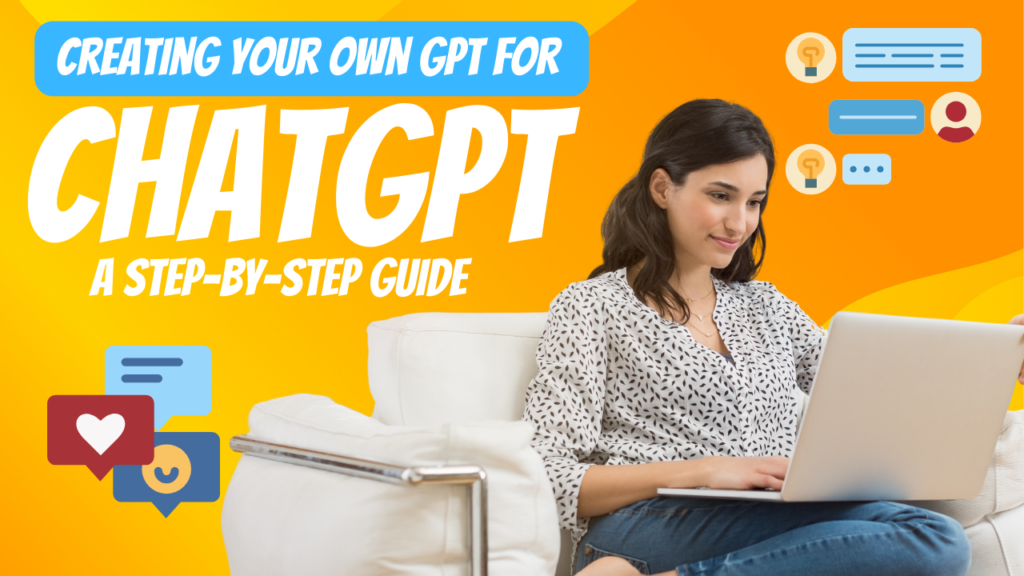
Digital displays surrounding us from everywhere
Creating Your Own GPT for ChatGPT: A Step-by-Step Guide

Creating Your Own GPT for ChatGPT: A Step-by-Step Guide
Artificial Intelligence (AI) is transforming how we interact with technology, and one of the most exciting developments in this space is the ability to create customized versions of ChatGPT—known as GPTs. These tailored AI models can be designed for specific purposes, enhancing their usefulness in daily life, at work, or at home. Whether you want a GPT to help you learn a new board game, teach your kids math, or design stickers, creating one is now easier than ever. This blog post will guide you through the process of creating your own GPT and explain how to add it to the GPT Store.
What Are GPTs?
GPTs are custom versions of ChatGPT that you can create for a specific purpose. They allow anyone to tailor ChatGPT to be more helpful in specific tasks, whether for personal use, business, or sharing with the community. For example, GPTs can help with learning game rules, providing educational support, or assisting with creative projects.
Why Create a GPT?
- Personalization: Tailor ChatGPT to fit your specific needs.
- Efficiency: Automate repetitive tasks and improve productivity.
- Community Sharing: Share your GPT with others, potentially helping a broader audience.
- Monetization: In the future, builders may earn money based on how many people use their GPTs.
How to Create a GPT
Creating a GPT is simple and does not require any coding skills. Here’s a step-by-step guide to get you started:
1. Start a Conversation
Visit chat.openai.com/create to begin. The process starts with a conversation where you define what your GPT will do. This involves giving it instructions and extra knowledge to tailor its behavior.
2. Define Instructions and Knowledge
- Instructions: Specify what the GPT should know and how it should respond. For example, if you’re creating a GPT to help with math homework, you could instruct it to explain concepts in simple terms and provide step-by-step solutions.
- Knowledge: Add any extra information your GPT might need. This could include specific datasets, links to educational resources, or custom responses.
3. Choose Capabilities
Decide what your GPT can do. You can enable it to:
- Search the Web: Allow it to access and retrieve up-to-date information.
- Make Images: Integrate image generation capabilities.
- Analyze Data: Provide it with the ability to process and interpret data.
4. Test and Refine
Interact with your GPT to ensure it performs as expected. Make adjustments to instructions and knowledge as needed. Testing is crucial to fine-tuning its responses and ensuring it meets your requirements.
Adding Your GPT to the GPT Store
Once you’ve created your GPT, you can share it publicly and add it to the GPT Store. Here’s how:
1. Save Your GPT for Everyone:
To share your GPT, ensure it’s set to be available for everyone. This means anyone with a link can access and use it.
2. Verify Your Builder Profile:
Go to Settings → Builder Profile → Enable your name or a verified website. This step ensures your profile is authenticated, adding credibility to your GPT.
3. Review Usage Policies and Brand Guidelines:
Ensure your GPT complies with OpenAI’s usage policies and brand guidelines. This includes avoiding harmful content and respecting user privacy.
4. Submit for Review:
OpenAI has a review system to ensure GPTs adhere to their policies. Submit your GPT for review. Once approved, it will be listed in the GPT Store, making it searchable and accessible to a wider audience.
Benefits of the GPT Store
The GPT Store is a platform where verified builders can share their creations with the community. It offers several benefits:
- Visibility: Your GPT can be discovered by users worldwide.
- Community Impact: Share tools that can help others in education, productivity, or just for fun.
- Monetization: In the future, builders may earn revenue based on the usage of their GPTs.
Privacy and Safety
OpenAI has implemented robust privacy and safety measures. Your data is secure, and interactions with GPTs are not shared with builders unless explicitly allowed. Builders can also choose whether user interactions are used to improve models, ensuring transparency and control over data usage.
Conclusion
Creating and sharing a GPT is a powerful way to leverage AI for specific tasks, whether for personal use, business, or community sharing. The process is straightforward, requiring no coding skills, and offers the potential to impact a wide audience. As AI continues to evolve, the ability to customize and create tailored models will become increasingly valuable, making tools like GPTs an integral part of our digital lives. Explore the possibilities of GPTs and start creating your own today by visiting chat.openai.com/create.
By building and sharing GPTs, we can collectively shape the future of AI, making it more useful, accessible, and aligned with our needs. Whether you’re an educator, developer, or enthusiast, the world of GPTs offers endless opportunities for innovation and collaboration.
Blog Notes: I was not paid to write this blog post and I will not receive any compensation if you follow the links. I have utilized AI technology and tools in the creation of this blog post but everything has been edited by me for reader consumption and accuracy. If you have any questions please feel free to contact me by completing the contact form on the front page of my website.
Latest Blog Posts
- Sora: OpenAI’s Revolutionary Text-to-Video Generative AI Model
- Open-Source AI for Everyone: DeepSeek’s Role in Bridging the Gap
- From Hedge Fund to AI Powerhouse: The Rise of DeepSeek
- AI Index Report 2024: Key Insights and Highlights
- Transform Your Content Creation: Everything You Need to Know About Pika